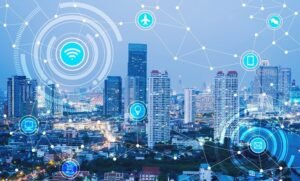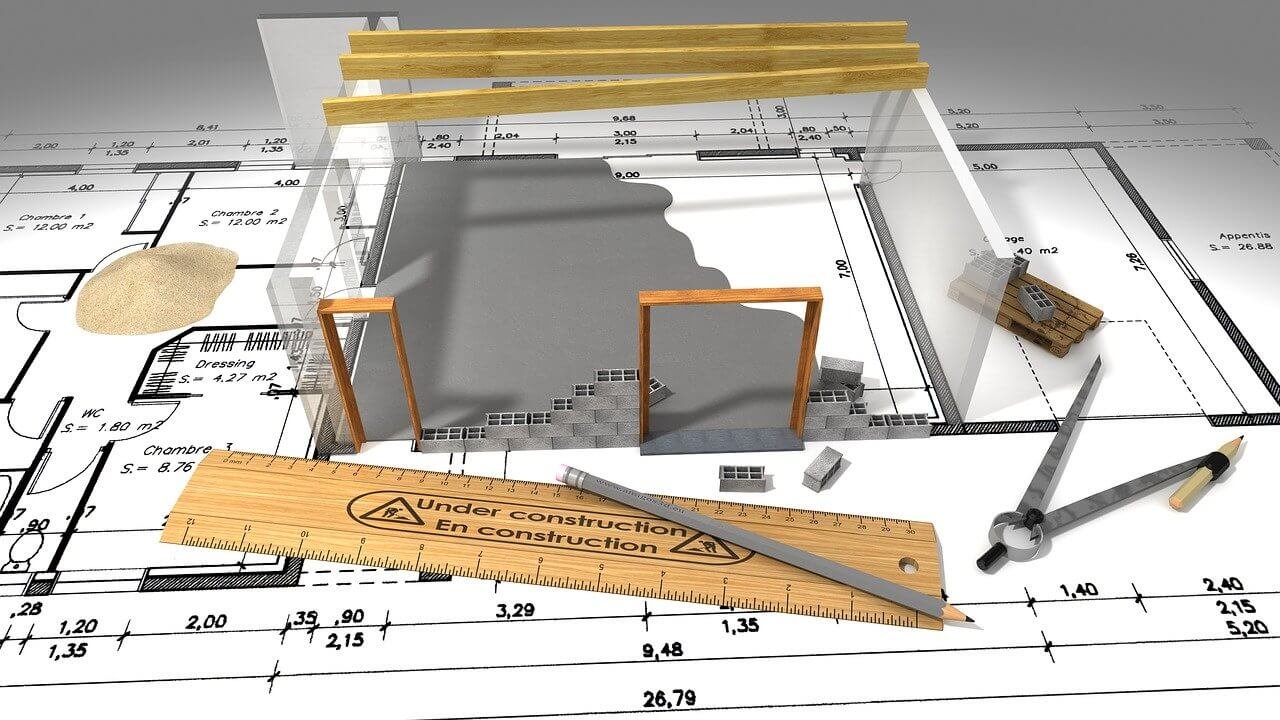Since from the beginning of the decade, developments in the Internet of Things (IoT) technology have enabled the rise of ‘smart’ building. A complicated interwoven network throughout new-buildings is now being practiced with building management systems for controlling all aspects of maintenance. The smart building’s concept has existed for a longer time, even though the exact definition of a smart building may have seemed elusive.
There’s a huge opportunity for architects to use the metadata they are collecting advantage by not just controlling the temperature or lighting within a building but also various attributes of it. 2019-20 has arrived with even higher expectations from smart building technologies that will accelerate the building industry far beyond its optimal use. So are you ready for embracing the IoT Smart Building advances happening now?

What is IoT?
The Internet of Things (IoT) constitutes a network of embedded devices that incorporate sensors and communication functions. It is a new paradigm that has changed the traditional way of thinking and living into a high tech lifestyle.
IoT uses smart devices and the internet to provide in order to facilitate human lives. It also provides innovative solutions to various challenges and issues related to government, public sector, private sectors as well as businesses. IoT has become an important aspect of life that can be sensed everywhere around us. It also takes advantage of quantum and nanotechnology in terms of storage, sensing, and processing speed which were not conceivable or used before.
A huge shift from traditional ways to innovative ways can be observed in our daily routine life with the increasing involvement of IoT devices and tech. Listed below are some of the IoT applications in day to day life:
- Wearables: It is the hallmark technology of IoT and is one of the earliest innovations to have deployed the IoT at its service. Who doesn’t use or wear Fitbit, smartwatches, heart rate monitors, Guardian glucose monitoring devices? In a glucose monitoring device, it detects the glucose levels in the body, using tiny electrodes called glucose sensor placed under the skin and relays the information via Radio Frequency to a monitoring device.
- Smart Home Applications: The best example of this is the AI home automation Jarvis employed by Mark Zuckerberg. One more well-known automation is the Allen Pan system where functions in the house are actuated by using a string of musical notes.
- Health Care: IoT is seen to turn the reactive medical-based systems into proactive wellness-based systems. The traditional usages lack critical real-world information, controlled environments, etc. IoT will thrive to open ways for valuable data through analysis, real-time field data, and testing.
- Smart cities: The thing about smart cities is that it is very specific to a city. The problems faced in one city are very different from other cities. The global issues, like clean drinking water, deteriorating air quality and increasing urban density, occurs differently in different cities. IoT can be used to analyze complex factors of town planning specific to the city.
- Agriculture: The growing population will reach nearly 10 million in the year 2050, thus needing agriculture technology to feeding people. There are numerous possibilities in this field when explored like- greenhouse farming.
- Industrial Automation: The field where both faster developments and quality of products are critical factors. IoT can prove to be game-changing with solutions for all domains like- factory digitalization, product flow monitoring, safety and security, quality control, inventory management, packaging optimization, logistics, and supply chain optimizations.
The IoT has amalgamated hardware and software to the internet to create a smarter and livable world.

How does IoT help in Smart Cities?
IoT helps in creating dynamic, and intelligent cloud-based interoperable networks by connecting electrical, mechanical, and electro-mechanical systems and platforms. Builders and designers throughout the world are more frequently looking to incorporate IoT devices and solutions into infrastructure.
A survey in the U.S discovered that 60% of building managers are familiar with IoT, and 43% believe the IoT would shape how they operate their buildings. The European Commission expects that 72% of consumers in European Union will have smart electricity meters installed in their homes by 2020 and 40% will have gas meters.
Amsterdam is one example of many, leading in the world of smart cities. They have been proactive in encouraging its members to develop smart cities, and the European Commission has allocated 365 million euros. In Paris, a program called Autolib in 2011 has seen a fleet of vehicles to 3,000. The connected vehicles are tracked via GPS, and drivers use the dashboard to reserve parking spaces.
Copenhagen has started using sensors to monitor the city’s bike traffic in real-time, which provides valuable data on improving bike routes in the city. It is a crucial task as more than 40% of the city’s residents commute by bike each day.
New York City has tested gunshot detection technology in police precincts in Brooklyn and the Bronx. New York also piloted a connected car program in 2015 with the goal of learning where drivers make frequent hard brakes or sharp turns.
San Diego has started using cameras built into connected streetlights to monitor pedestrian traffic and reroute cars during peak hours to avoid pedestrian accidents and alleviate congestion.
Conclusion:
Being a new concept in smart buildings and cities, only a small percentage of organizations leverage IoT for building management. The potential of smart cities is nearly limitless, and it will keep innovating in the coming years. IoT iterates, improves, and keeps building. We can’t wait for new technology to come in the market instead we should ourselves find ways in which this technology can be used.
To know more about Architecture Technology, Stay Tuned.



